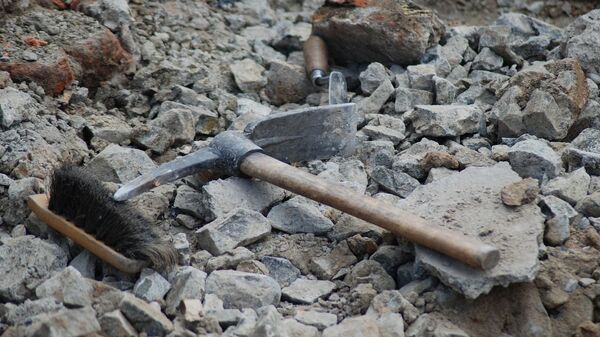In a new study published Monday in the Zoological Journal of the Linnean Society, researchers at the University of Bristol used advanced imaging and 3D-modeling techniques to digitally reconstruct the brain of the Thecodontosaurus, which is also known as the Bristol dinosaur, since its fossil bones were first uncovered in 1834 in Bristol, England.
According to the researchers, the endocranial reconstructions, which were generated from CT scans, revealed important Thecodontosaurus characteristics, namely that the species walked on two legs and was cursorial, which means that it adapted specifically to run.
"Our analysis of Thecodontosaurus' brain uncovered many fascinating features, some of which were quite surprising. Whereas its later relatives moved around ponderously on all fours, our findings suggest this species may have walked on two legs and been occasionally carnivorous,” Antonio Ballell, lead author of the study, said in a Monday news release by the University of Bristol.
— Antonio Ballell (@BallellPalaeo) December 14, 2020
The 3D models also shed light on the animal’s floccular lobes, which are part of the cerebellum and play a role in the maintenance of balance equilibrium and muscle tone.
"Even though the actual brain is long gone, the software allows us to recreate brain and inner ear shape via the dimensions of the cavities left behind. The braincase of Thecodontosaurus is beautifully preserved so we compared it to other dinosaurs, identifying common features and some that are specific to Thecodontosaurus," Ballell explained.
"Its brain cast even showed the detail of the floccular lobes, located at the back of the brain, which are important for balance. Their large size indicate [sic] it was bipedal. This structure is also associated with the control of balance and eye and neck movements, suggesting Thecodontosaurus was relatively agile and could keep a stable gaze while moving fast,” he added.
The reconstruction of the inner ears also allowed researchers to determine that the Thecodontosaurus could hear better compared to other animals. In fact, its hearing frequency was relatively high, suggesting that it could “recognize varied squeaks and honks from different animals,” the news release explains.
Although the animal’s diet has long been debated, the scans reveal that the parts of the brain linked to keeping the head, eyes and gaze steady during movement were well-developed, which suggest that Thecodontosaurus could catch prey, Ballell noted.
However, the researchers’ analysis also found that the dinosaur’s tooth morphology indicated that plants were a main component of its diet.
“It's possible it adopted omnivorous habits,” Ballell noted.
Mike Benton, study co-author, also applauded the 3D technology used during the research.
"It's great to see how new technologies are allowing us to find out even more about how this little dinosaur lived more than 200 million years ago,” Benton said. "We began working on Thecodontosaurus in 1990, and it is the emblem of the Bristol Dinosaur Project, an educational outreach scheme where students go to speak about science in local schools. We're very fortunate to have so many well-preserved fossils of such an important dinosaur here in Bristol. This has helped us understand many aspects of the biology of Thecodontosaurus, but there are still many questions about this species yet to be explored”.

